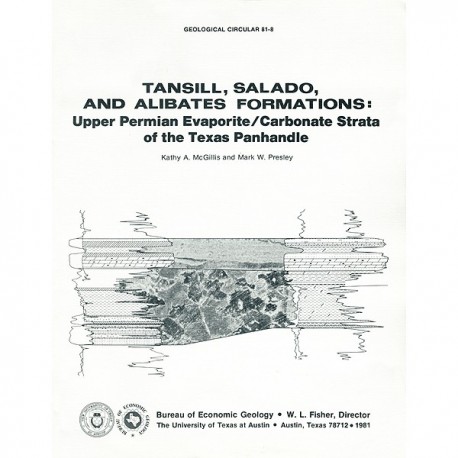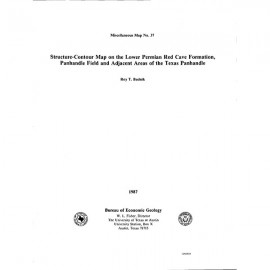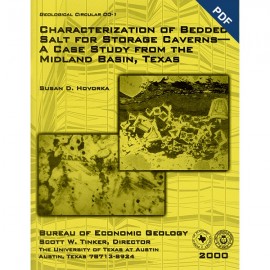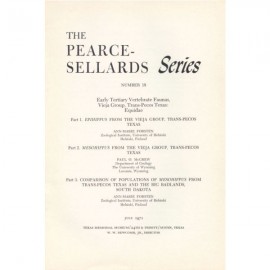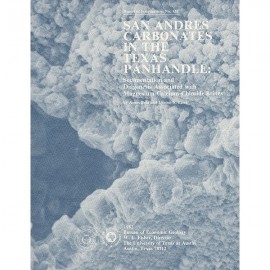Geological Circulars
-
Books & Reports
- Reports of Investigations
- Guidebooks
- Udden Series
- Geological Circulars
- Down To Earth
- Atlases of Major Oil and Gas Reservoirs
- Texas Memorial Museum Publications
- Environmental Geologic Atlas of the Texas Coastal Zone
- Mineral Resource Circulars
- Other Reports
- Seminars and Workshops
- Handbooks
- Submerged Lands of Texas
- Symposia
- Annual Reports
- Open File Reports
-
Maps & Cross Sections
- Thematic Maps
- Miscellaneous Maps, Charts & Sections
- Geologic Atlas of Texas
- STATEMAP Project Maps
- Geologic Quadrangle Maps
- Cross Sections
- Highway Geology Map
- Energy and Mineral Resource Maps
- Shoreline Change and Other Posters
- Wilcox Group, East Texas, Geological / Hydrological Folios
- Bouguer Gravity Atlas of Texas
- River Basin Regional Studies
- Featured Maps
- Posters
- Teachers & the Public
-
Geological Society Publications
- Gulf Coast Association of Geological Societies
- Alabama Geological Society
- Austin Geological Society
- Corpus Christi Geological Society
- Houston Geological Society
- Lafayette Geological Society
- Mississippi Geological Society
- New Orleans Geological Society
- South Texas Geological Society
- GCS SEPM Publications
- Historic BEG & UT Series
Tansill, Salado, and Alibates Formations: Upper Permian Evaporite/Carbonate Strata of the Texas Panhandle
GC8108
For a downloadable, digital version: GC8108D.
GC8108. Tansill, Salado, and Alibates Formations: Upper Permian Evaporite/Carbonate Strata of the Texas Panhandle, by K. A. McGillis and M. W. Presley. 31 p., 15 figs., 2 tables, 1981. ISSN: 0082-3309. Print.
To purchase this publication as a PDF download, please order GC8108D.
ABSTRACT
The Salado-Tansill and Alibates Formations are the youngest evaporite and carbonate facies within a thick Permian sequence of evaporites, carbonates, and red beds in the Texas Panhandle, They accumulated during the final stages of a regional regression that began in Early Permian time, and they record the last minor incursion and subsequent regression of Permian seas in the Texas Panhandle.
Salado-Tansill salts and terrigenous red beds were deposited in the updip or proximal parts of a salt basin that existed northeast of the Delaware Basin. Terrigenous clastic facies were deposited on strike-oriented salt-mud flats; thicker salt units were deposited in shallow, supratidal brine pans and on the surface of supratidal salt-mud flats. Salado-Tansill salt originally extended throughout most of the Palo Duro Basin, but its distribution has subsequently been modified by dissolution. Alibates strata accumulated during a transgressive-regressive episode that may have begun as early as mid-Salado-Tansill time. Initial transgression is recorded in the Alibates Formation by an extensive basal dolomite throughout the Palo Duro and Dalhart Basins. Subsequent regression of the Alibates sea resulted in deposition of thick evaporites in the central and southern Palo Duro Basin. Alibates dolomite and evaporites were deposited in intertidal to supratidal, hypersaline environments that occupied a broad, low-relief evaporative plain. Algal mats bound aragonite mud and gypsum crystals to form laminated dolomite and interlaminated anhydrite and dolomite. Laminated gypsum was deposited on supratidal gypsum flats. Extensive shallow pending is indicated by the presence of "grass mat" gypsum.
Geometries of the Salado-Tansill and Alibates basins were similar. Coincidence of paleoslope, correlatable extent, and depositional axes suggest a basinal geometry in which deeper basinal areas were located in the central and southern Palo Duro Basin.
Keywords: Alibates Formation, Dalhart Basin, gypsum, Palo Duro Basin, red beds, Salado Formation, Tansill Formation, Panhandle, Texas Panhandle, Texas
Citation
McGillis, K. A., and Presley, M. W., 1981, Tansill, Salado, and Alibates Formations: Upper Permian Evaporite/Carbonate Strata of the Texas Panhandle: The University of Texas at Austin, Bureau of Economic Geology, Geological Circular 81-8, 31 p.
